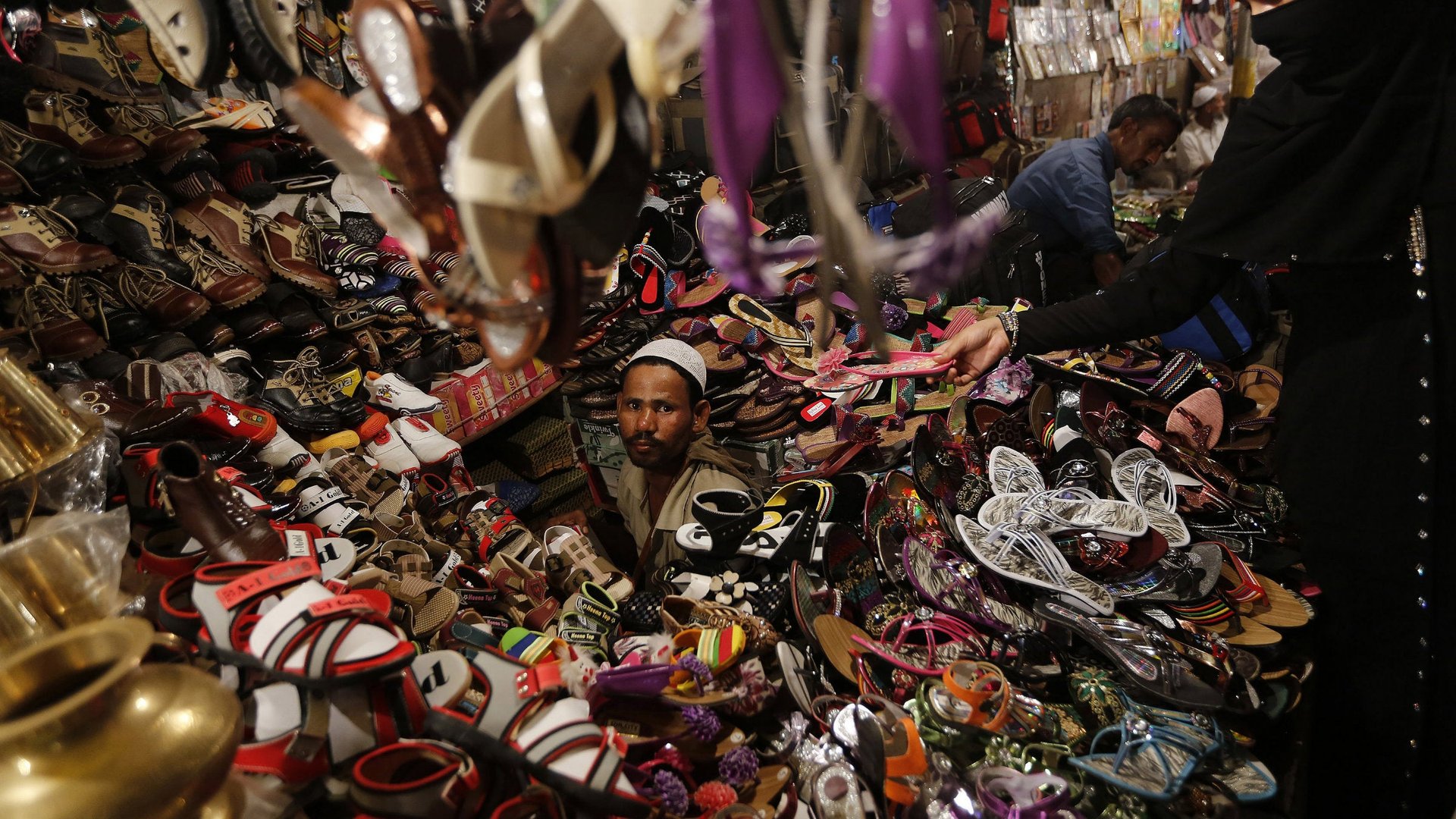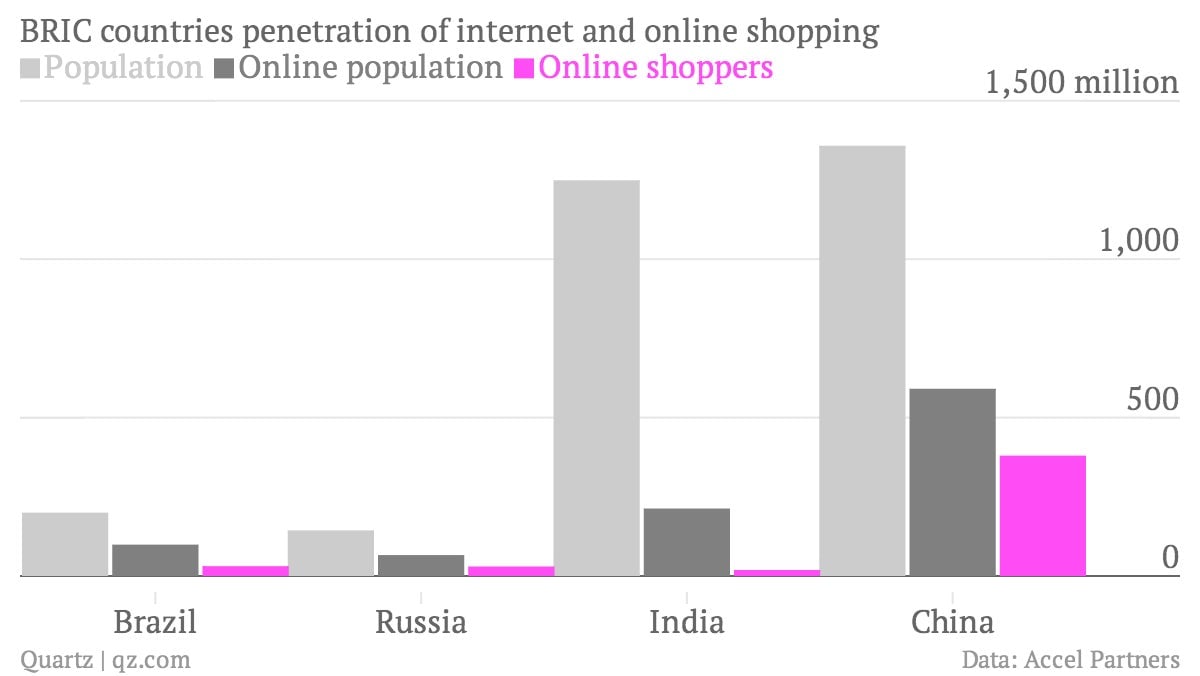The numbers that explain why Amazon and eBay are pouring millions into India’s e-commerce market
Last year, some 20 million Indians spent a total of $2 billion shopping online, according to a report from Accel Partners, a venture capital firm. That represented just over 3% of all money spent in organized retail in the country, and a piffling 0.3% of the total market including unorganized retail, which includes neighborhood vegetable vendors, hawkers, and informal markets.


Last year, some 20 million Indians spent a total of $2 billion shopping online, according to a report from Accel Partners, a venture capital firm. That represented just over 3% of all money spent in organized retail in the country, and a piffling 0.3% of the total market including unorganized retail, which includes neighborhood vegetable vendors, hawkers, and informal markets.
By contrast, some 280 million Chinese, or about half the country’s online population, spent $106 billion in online shops in 2013. India isn’t going to hit those numbers any time soon. But Accel forecasts that Indian online shoppers will double to 40 million and their spending with quadruple to $8.5 billion by 2016. CLSA, a brokerage, has different but similarly optimistic numbers: It estimates India’s e-commerce market size at $3.1 billion and forecasts that it will expand to $22 billion in five years.
India isn’t going to become like China—or even Russia or Brazil—any time soon. Accel calculates India’s internet penetration at a mere 17%, compared to 44% in China, 46% in Russia and 50% in Brazil. Only 9% of internet-connected Indians shop online. A third of Brazilians do, and nearly half of Russians and Chinese.

Accel’s optimism is based on growing consumer confidence and an expanding range of goods available online. The firm sees India’s population of internet users rising to 400 million by 2016, who will be younger and more comfortable with shopping online. The biggest contributing groups will be 19- to 24-year-olds, 30% of whom use Facebook, and women, who spend more time looking at expensive things like clothes and jewelry, according to Accel. Women’s share of spending is expected to rise from 26% to 35% by 2016. These groups will drive growth, Accel argues. Moreover, as e-commerce firms improve their services in smaller cities, as well as large states with big populations but poor infrastructure, more people will have access to online shopping.
India’s e-commerce merchants have been repeatedly bitten by the realities of trading in India, with closures, arrests and lots of losses. But the money continues to pour in. FlipKart raised $160 million last October, which followed a $200 million round of funding from Accel and Naspers, a big South African company, a few months earlier, taking its total to $540 million. Snapdeal has received repeated injections of cash from eBay. And Amazon set up its own business in India in June.